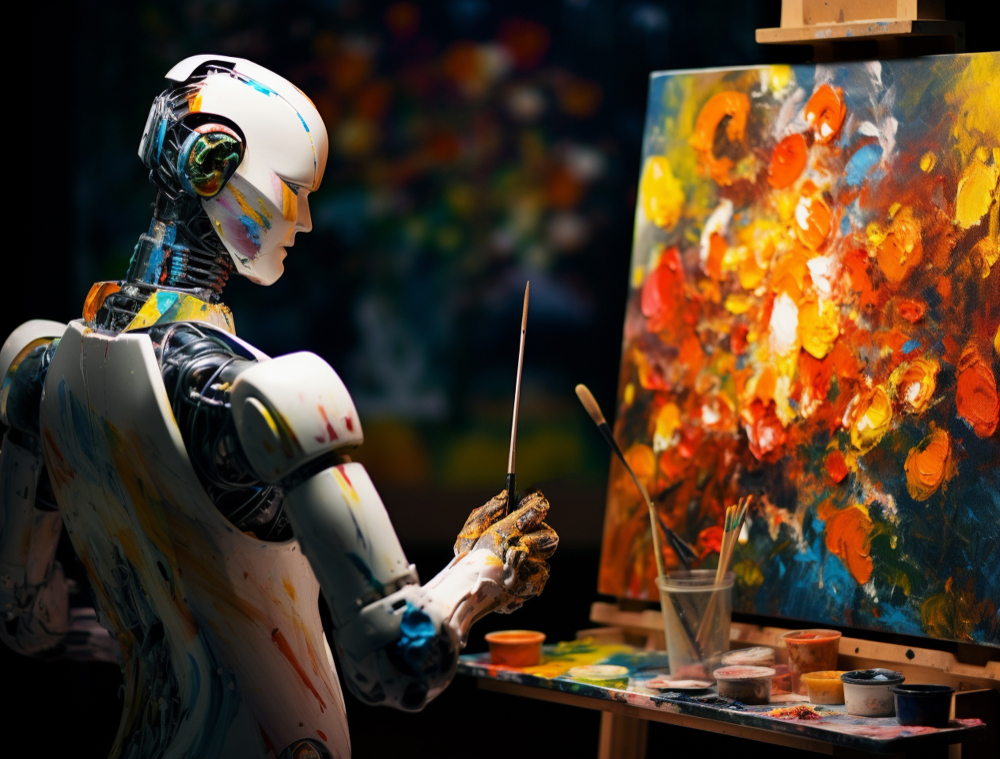

The inclusion of machine learning in graphic design is revolutionizing the design, conceptualization, and visual content execution of creative professionals in today’s fast-evolving digital landscape. Machine learning (ML) has worked as a transformative force in the graphic design sector, from automating monotonous tasks to generating original artwork.
Machine learning (ML) is a fragment of artificial intelligence (AI) that enables computers to learn from data and improve over time without being explicitly programmed. The application of ML algorithms to graphic design helps in analysing large datasets of design elements along with learning aesthetic preferences. It also assists designers through automating workflows, generating suggestions, and creating complete visuals. The inclusion of machine learning in graphic design work toward empowering creatives to specifically focus on storytelling, strategy, and leaving repetitive tasks to intelligent systems.
One of the crucial applications of machine learning in graphic design is automated picture editing. ML tools have the capability of rapidly eliminating backgrounds, modifying lighting, improving photo quality, and accurately colorizing black-and-white images. ML-based programmes like Remove.bg and Adobe Photoshop's Sensei have helped in automating a number of processes that were formerly done by manual labour. This feature has allowed the designers to spend more time on high-level design decisions rather than monotonous changes.
The application of machine learning in graphic design also allows for creating original artwork. In this context, Generative Adversarial Networks (GANs) are a type of ML algorithm that has the ability to generate new images, illustrations, as well as even 3D models. Designers and artists utilize GANs for experimenting with new styles or developing base designs that can be further refined in the future. The AI-generated design tools, including Artbreeder or DALL·E allow the creators to generate visual concepts which may otherwise take hours or days to manually conceptualize.
Machine learning helps in generating layout recommendations by analyzing thousands of design templates, logos, and branding materials. These layout recommendations accurately suit particular markets or target audiences. Machine learning uses platforms including Canva and Adobe Spark to suggest font combinations, picture placements, and color schemes depending on user behavior and current design trends. These suggestions allow for increasing productivity, along with making it easier for non-designers to produce professional visuals.
Machine learning has become beneficial in improving user experience (UX) and user interface (UI) design. ML can help in predicting pain points, along with recommending design adjustments, with tracking the ways in which users interact with interfaces. This results in more streamlined user flows and intuitive layouts.. UX designers use this data for crafting interfaces that are visually appealing as well as user-centric for enhancing the overall effectiveness of digital products.
Machine learning allows the designers to create hyper-personalized visuals. ML has the ability to identify user preferences and generate personalized banners, email graphics, and social media posts as per individualized preferences. This becomes beneficial, especially at the time of digital advertising, where user behaviour is directly influenced by dynamic visuals. Personalizing the user experience helps in increasing engagement and the rate of conversions.
Designers often need to perform repetitive tasks, including resizing images for diverse platforms or exporting assets in various formats. Inclusion of machine learning tools helps in automating these tasks, along with significantly minimizing the time of production as well as human error. The tools, including Figma plugins or Adobe Creative Cloud’s automation features powered by ML, can be beneficial in automating design-to-code translation or grouping asset generation.
The application of machine learning in graphic design is not about a passing trend- it’s a paradigm shift. ML helps by reshaping the graphic design landscape from automating routine tasks to inspiring new levels of creativity. Designers can work smarter, faster as well as more creatively through embracing these intelligent tools. The continuous evolution of machine learning will work toward changing its application, along with opening up limitless possibilities for personalization, innovation, and artistic expression.
